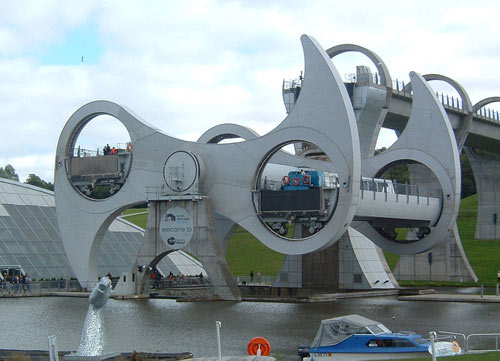The Falkirk Wheel
When the connection between two Scottish canals was disconnected, a clever solution to reconnect them was employed. Instead of linking them by a series of locks, a giant rotating wheel was constructed to lift and lower the boats the 79 feet from one canal to the other.

These caissons always weigh the same whether or not they are carrying their combined capacity of 600 tonnes (590 LT; 660 ST) of floating canal barges as, according to Archimedes’ principle, floating objects displace their own weight in water, so when the boat enters, the amount of water leaving the caisson weighs exactly the same as the boat. This keeps the wheel balanced and so, despite its enormous mass, it rotates through 180° in five and a half minutes while using very little power. It takes just 22.5 kilowatts (30.2 hp) to power the electric motors, which consume just 1.5 kilowatt-hours (5.4 MJ) of energy in four minutes, roughly the same as boiling eight kettles of water.





Stay Connected